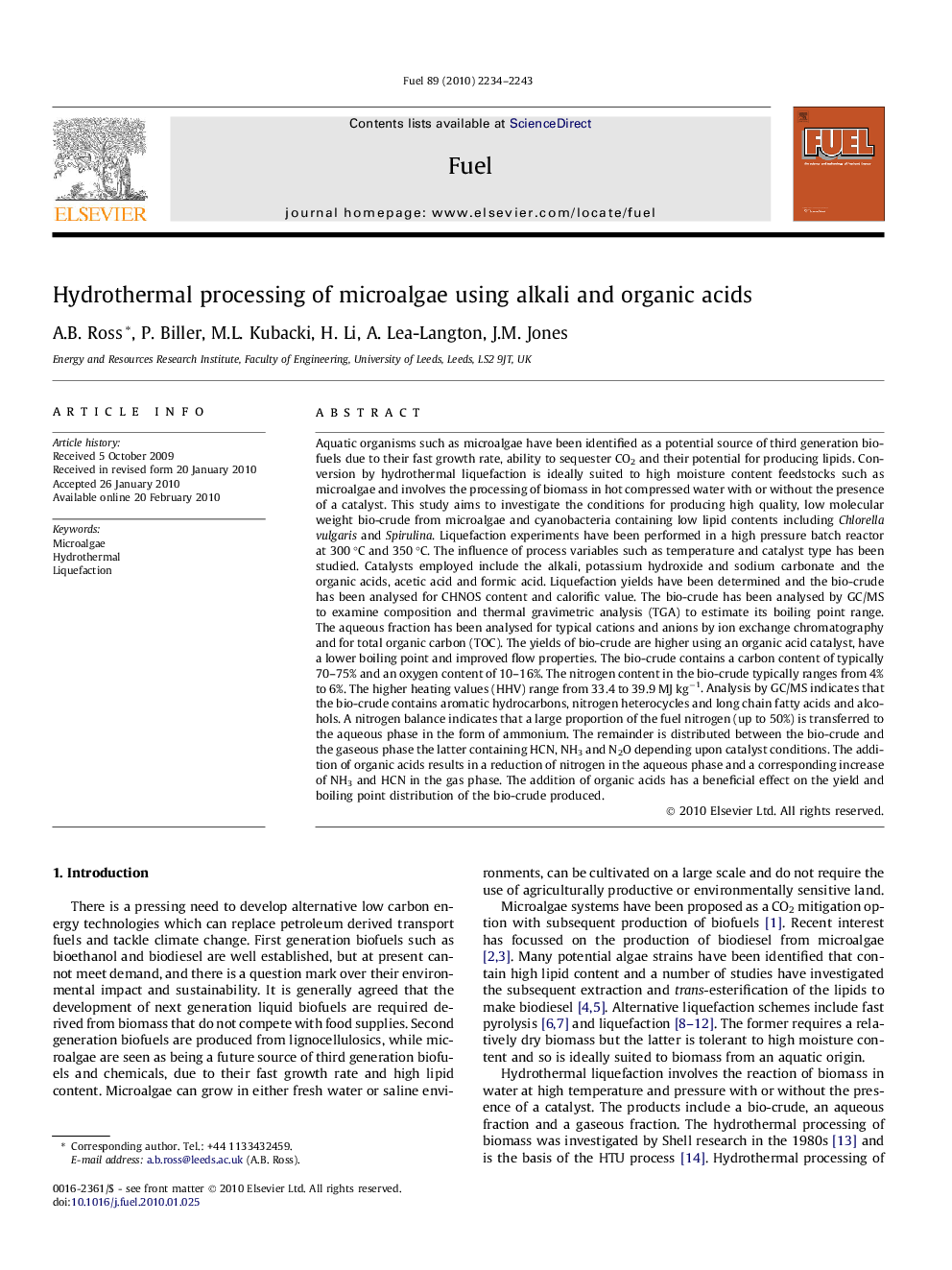| کد مقاله | کد نشریه | سال انتشار | مقاله انگلیسی | نسخه تمام متن |
|---|---|---|---|---|
| 207049 | 461206 | 2010 | 10 صفحه PDF | دانلود رایگان |

Aquatic organisms such as microalgae have been identified as a potential source of third generation biofuels due to their fast growth rate, ability to sequester CO2 and their potential for producing lipids. Conversion by hydrothermal liquefaction is ideally suited to high moisture content feedstocks such as microalgae and involves the processing of biomass in hot compressed water with or without the presence of a catalyst. This study aims to investigate the conditions for producing high quality, low molecular weight bio-crude from microalgae and cyanobacteria containing low lipid contents including Chlorella vulgaris and Spirulina. Liquefaction experiments have been performed in a high pressure batch reactor at 300 °C and 350 °C. The influence of process variables such as temperature and catalyst type has been studied. Catalysts employed include the alkali, potassium hydroxide and sodium carbonate and the organic acids, acetic acid and formic acid. Liquefaction yields have been determined and the bio-crude has been analysed for CHNOS content and calorific value. The bio-crude has been analysed by GC/MS to examine composition and thermal gravimetric analysis (TGA) to estimate its boiling point range. The aqueous fraction has been analysed for typical cations and anions by ion exchange chromatography and for total organic carbon (TOC). The yields of bio-crude are higher using an organic acid catalyst, have a lower boiling point and improved flow properties. The bio-crude contains a carbon content of typically 70–75% and an oxygen content of 10–16%. The nitrogen content in the bio-crude typically ranges from 4% to 6%. The higher heating values (HHV) range from 33.4 to 39.9 MJ kg−1. Analysis by GC/MS indicates that the bio-crude contains aromatic hydrocarbons, nitrogen heterocycles and long chain fatty acids and alcohols. A nitrogen balance indicates that a large proportion of the fuel nitrogen (up to 50%) is transferred to the aqueous phase in the form of ammonium. The remainder is distributed between the bio-crude and the gaseous phase the latter containing HCN, NH3 and N2O depending upon catalyst conditions. The addition of organic acids results in a reduction of nitrogen in the aqueous phase and a corresponding increase of NH3 and HCN in the gas phase. The addition of organic acids has a beneficial effect on the yield and boiling point distribution of the bio-crude produced.
Journal: Fuel - Volume 89, Issue 9, September 2010, Pages 2234–2243